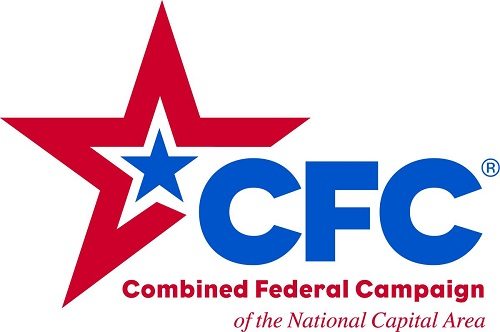
NPQ has published a number of articles recently about the Combined Federal Campaign, which took a very dramatic 19 percent drop this past year, and its proposed new rules. While the drop is clearly due in part to circumstances last year—sequestration, furloughs, and a suspension of the campaign mid-stream—it was undeniably part of a longer trend; you can see the stats here in a graph.
We may hold that workplace giving is potentially on its way out as a natural result of technology and changes in workplace dynamics, but that is not the only opinion. Here, we present the views of Anthony DeCristofaro, who is the former executive director of the CFC of the National Capital Region and who now works for the Department of Defense.
Like every employer, the government tries to offer the best employee benefit programs for its workers—military, civilian, or postal—while maintaining vigilant oversight to ensure the programs are operated within appropriate legal and security demands. Charitable giving is no exception to this. In keeping with that aim, the U.S. Office of Personnel Management (OPM) office just released a new rule which, starting in 2016, will lead the way for increased charitable giving and govern the future vitality of the Combined Federal Campaign (CFC). The revised rule incorporates new technologies to lower costs, improve employee engagement, and chart a positive trajectory for this campaign for years to come.
The CFC-50 Commission provided a comprehensive blueprint with specific recommendations to lower costs, increase transparency, and take other measures to improve participation in the campaign. Taken as a whole, the approach in the new rule is balanced and fully in line with the CFC-50 Commission’s recommendations.
However, when the government tinkers with a program that has been overwhelmingly successful (CFC has generated more than $7.2 billion for charities since 1961), people understandably get apprehensive. A lot of questions on implementation plans still remain to be answered. However, after assisting with this campaign since 1983, I would encourage everyone to read the rule carefully and consider the overall positive impact and results envisioned with it—or the declining trends that may continue without it.
Every time OPM has looked at changing the CFC rules, someone inevitably cries, “Wolf!” For much of my career before joining the government in 2012, my name was likely on some of those news releases. Take 2006—the last time OPM made significant changes to the CFC rule. Commentators like me opposed the elimination of the overhead standard and the addition of the new (at the time) five-digit charity-coding scheme. We forecast gloom and doom. However, giving through CFC grew by more than $12 million from the year before those reforms were announced through 2010.
Recently, Rick Cohen wrote about the CFC for NPQ and posed a few probing questions about some of the latest changes:
Does anyone but OPM like the proposed fee structure?
No one likes paying too much for anything. That’s why most, if not all, federal employees should like the new fee structure once they learn that more of their gifts will get to the charities they choose. Charities, too, will like getting higher net payouts from the new structure when it starts in 2016. Reducing the nominal expense ratio of nearly 13 percent (based upon data released by OPM on April 23, 2014) by half or more will help spur more to give.
The new rule opens additional avenues for contributions as OPM sets to allow new employees to give when hired and mobilizes a disaster response system. Plus, local charities will soon be able to tap donors outside their home markets, a privilege currently only available to national and international charities. A hypothetical staff member for U.S. Congressman Stephen Lynch (D-MA) who ends up in the Washington office is presently not able to give to the local charities back in Boston, Brockton, or Quincy. Once he or she takes the job in the Rayburn House Office Building, the staffer can only choose from local charities in the greater Washington, D.C. area. Soon, OPM also will open up a mechanism for employees to give back to their hometowns, not just their permanent duty locations. Local charities will be winners on all fronts. So, too, will those federal employees who still have a place in their heart for charities from back home when home is not their permanent duty station.
The current system cost more than $26.8 million (or 12.8 percent of 2013’s contributions) to operate last year. That comes off the top before a charity sees a dime. It will be different to pay a fee up front to get into the CFC, but the net amount charities get after excess costs are purged will be a positive difference on the bottom line of the charities.
“The number one reason that people don’t have faith or trust in the nonprofit sector is that donors don’t know how charities spend their money,” Brian Gallagher, United Way president, told the Senate Finance Committee. According to Gallagher and a survey his trade association completed, 71 percent of respondents who said that they didn’t trust charities said their trust in nonprofits would be greater if they knew how the money was spent. The new rule injects welcome additions to the transparency in the CFC at all levels.
Sign up for our free newsletters
Subscribe to NPQ's newsletters to have our top stories delivered directly to your inbox.
By signing up, you agree to our privacy policy and terms of use, and to receive messages from NPQ and our partners.
Does anyone but OPM like eliminating donations that aren’t made online?
Both federal employees and charities will favor this system. Consider the testimony submitted by former Global Impact president Renee S. Acosta to the CFC Commission:
“Innovative technology attracts more donors and reduces processing costs, enabling more money to help people in need. Online donations reduce processing costs and mitigate risk. The number of donors eligible to participate in the Combined Federal Campaign of the National Capital Area paperless payroll tripled this year due to early pilot success. The shift to paperless saves an estimated $14 per pledge.”
When the Defense Accounting and Finance Services (DFAS) introduced an electronic module for making a CFC pledge in the 2013 campaign, more than 42,000 military and civilian personnel around the world shifted to using the system. They gave more than $22.5 million of the 2013 CFC via the DFAS online myPay CFC online module. That alone saved more than $600,000 in costs that would have been incurred to generate and process pledges made on a traditional form. Plus, the gifts were $150 higher than the national average gift made in 2013 by payroll deduction.
Payroll deduction, checks, money orders, and credit and debit cards all remain. Whether an employee wants to make a one-time gift or a recurring gift, they will have several methods to do so. The only method being eliminated for the future is the high-risk giving of cash gifts. Yet something else is sure to pop up in its place as systems are designed.
Heather Mansfield, a blogger at Nonprofit Tech for Good, recently noted the potential for mobile or digital wallets. “More than any other mobile payment processing technology, mobile wallets have the greatest possibility for transforming fundraising, but the technology and its implications are not well understood in the nonprofit sector.” As OPM contractors build new systems, tech-savvy workers, who often carry multiple mobile devices, may find even more ways to give.
Does anyone like the plans for the increasing centralization of CFC campaigns?
This campaign will still be conducted with personal solicitation of every employee by someone they know. That is still accepted as the key to CFC success. There remains a network of local oversight committees, campaign managers inside each department or agency, and newly-tasked outreach coordinators to market the campaign in local areas where employees live and work.
The only functions being centralized are the back office, resulting in the elimination of approximately 160 different pledge processing centers, 160 expensive financial audits, 160 compliance audits, and the manual distribution, collection and processing of more than 650,000 pledge forms. Many organizations have been doing essentially what OPM proposes for centralization of back-office systems for years. Charities themselves have been working to develop and deploy centralized campaign administration tools and systems. This includes United Way Worldwide, local United Way organizations in places like Norfolk, EarthShare, Community Health Charities, and others.
Much of what we do and how we as consumers behave differs significantly from when the CFC was brought into existence by President Kennedy. In 1961, my parents “got milk” delivered to our front door. IBM introduced the Selectric typewriter; look around your office for one of those boat anchors. FM stereo was introduced. President Kennedy challenged us to land an astronaut on the moon—and, with the stroke of his pen, he also signed the executive order creating the CFC.
Today, we have more computing power in our pocket smartphones than NASA had in a room to design the Apollo program. That same little device delivers a library of music, movies, and books at the touch of a button in a smaller device than an old AM-FM transistor radio. Times have changed, but the CFC has not changed as much. Now is the time for us to leap into the future. By freeing up campaign workers from a paper-dependent process, we will free them to focus on continuing to implement quality workplace campaigns to touch donors and ask for support of local, national, and international charities. With careful project planning and testing before implementation, lower costs, and greater local involvement from agencies everywhere, the golden years of the CFC are ahead.
Change is unsettling. Questions remain. However, service is the common denominator that brings people to the federal sector for a career. The new CFC rules are the blueprint for expanding giving, volunteerism, and participation by current and future generations of employees who already are committed to public service. The improvements brought about by this new regulation should make that effort easier for agencies, more gratifying for employees, and, most importantly, more beneficial for the literally millions of people who really need help and who rely upon the critical services provided by CFC-supported charities thanks to the generosity of these annual employee-donors.
From March 1987 through May 1993 and from March 1999 through March 2001, Anthony DeCristofaro was an employee of United Way of America. In addition, he has worked for three other local United Way organizations in his career. He was not working for any United Way organization when Mr. Gallagher presented his testimony to the Senate Finance Committee and had no role in the preparation of that statement. From June 2002 through June 2010, the author was an employee of Global Impact. He was not working there when this statement was presented to the CFC 50 Commission in December 2011 and had no hand in its preparation.








